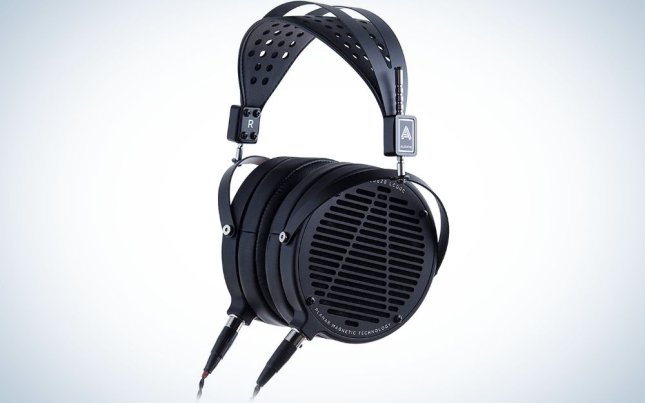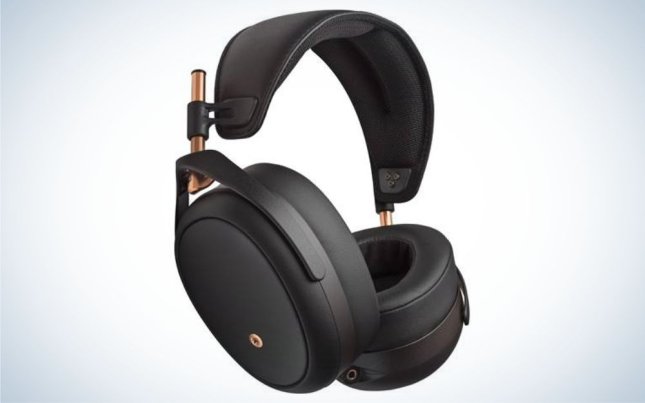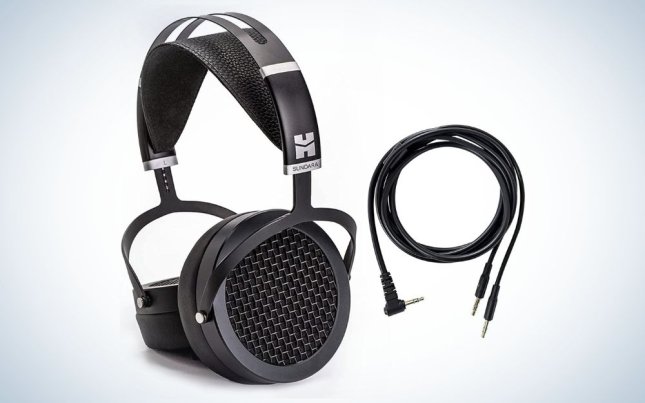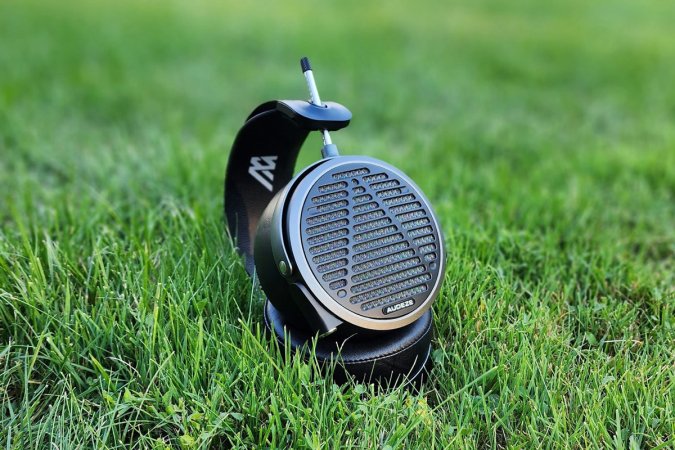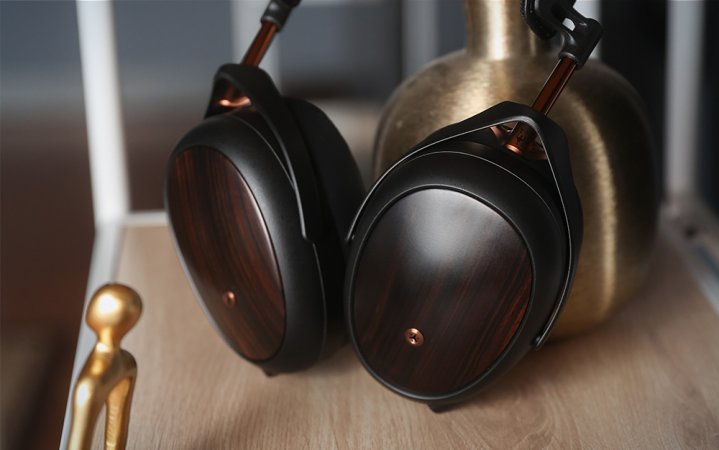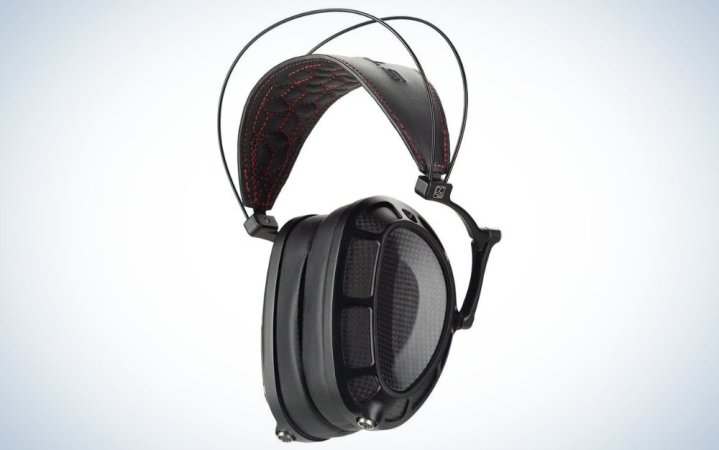We may earn revenue from the products available on this page and participate in affiliate programs. Learn more ›

In the world of audiophile headphones, planar magnetics rule the roost. Many of the most popular headphones, even for listeners on a budget, use planar magnetic drivers, and for good reason: the level of detail and clarity they’re able to provide is outstanding. It’s no exaggeration to say that the best planar magnetic headphones, like the best overall LCD-2 Classic and more from multi-entry brand Audeze, will let you hear things you’ve never heard before and can breathe new life into your listening. If you’ve found yourself craving an upgrade to your audio experience, you’ve come to the right place. In this article, we’ll be breaking down the best planar magnetic headphones you can buy across six key categories to help you sink into your music like never before with the set that’s right for you.
- Best overall: Audeze LCD-2 Classic
- Best splurge: Audeze LCD-5
- Best budget: HIFIMAN Sundara
- Best for mixing: Audeze MM-500
- Best closed-back: Meze Audio LIRIC
- Best earphones: 7Hz Timeless
- Best for gaming: Moondrop Venus
- Best for classical and live music: HIFIMAN Audivina
- True audiophile over-ears: Dan Clark Audio Stealth
How we chose the best planar magnetic headphones
I’ve been a headphone collector for over five years but an audio enthusiast for much, much longer. I began my first foray into the world of audio as a kid, borrowing my dad’s Sony over-ears to sink into Metallica’s 1991 self-titled LP (aka “The Black Album”). As an adult, I contented myself with cheap earphones until I joined the tech press in 2013 and discovered a passion for all things personal audio. Since then, it’s become a full-on hobby, and some of my very favorite listening experiences have taken place with planar magnetic headphones. I own nine different sets of planar headphones and have no plans to stop collecting them anytime soon.
For this round-up, I’ve gathered the best selections across six different product categories. Listening is a subjective thing, so I connected with Tony Ware—PopSci’s managing editor and a fellow personal audio enthusiast—to discuss our experiences and hash out what really deserved to be called the best of the best. Every choice we landed on was researched and cross-referenced with leading audio forums, Head-Fi and r/headphones, and a wide array of professional reviews and user impressions. They don’t often come cheap, but each of the headphones included in this list is exceptional and well worth your hard-earned dollars.
The best planar magnetic headphones: Reviews & Recommendations
Now that you’re interested in planar-magnetic technology (sometimes referred to as orthodynamic headphones), we’ve gathered the top choices across six categories for your consideration. There is some overlap in these choices, so consider all these planars and what works best for your budget and listening preferences.
Best overall: Audeze LCD-2 Classic
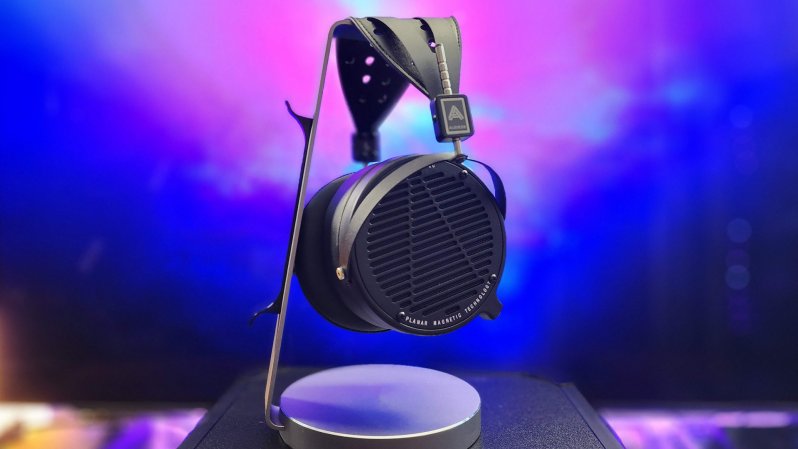
Pros
- Great balance of price and performance
- Durable metal construction
- Outstanding value
- Pelican-style travel case
Cons
- Boring appearance
- Requires EQ to sound its best
Why it made the cut: The Audeze LCD-2 Classics balance outstanding sound with a reasonable price, making them an accessible and exceptional choice.
Specs
- Price: $799
- Type: Open-Back
- Frequency Response: 10Hz – 50kHz
- Impedance: 70 ohms
- Sensitivity: 101 dB
- Weight: 550 grams
The LCD-2 Classic may not be the pinnacle of planar performance, but it’s the best overall choice for users looking to balance outstanding audio quality with a reasonable price. The LCD-2 Classic takes the LCD-2 back to its roots, removing the current generation’s Fazor waveguide system, and simplifying some design elements to deliver a headphone that’s the perfect fit for the value-conscious audiophile.
The LCD-2 Classic features the same driver as the LCD-2, which means you can count on a similarly great sound: rich, well-extended bass, lush vocals and instruments, and airy, spacious treble. The LCD delivers a moderately wide soundstage but features exceptionally good layering, so you can hear every note and every harmony, regardless of how far back in the mix it is. This also makes it a great choice for sound engineers and content creators who need to hear every tiny piece of the content they’re creating.
At $195 less than the current LCD-2 (with its more richly appointed trimmings and audiophile articulation), there are some trade-offs. The biggest is the need to EQ these headphones to get them to sound their best. Out of the box, many users describe the mids as sounding “off” or “glaring” due to some strange mid-range peaks. These can be easily tamed with EQ software, bringing this headphone in line with its more expensive sibling. Put another way, these headphones do require a touch more effort upfront but can sound downright amazing after.
The construction has also been changed, swapping out the wooden rings on the standard LCD-2 with basic black nylon. The all-black construction does make the LCD-2 Classic look a little boring, but it’s also more durable and pairs well with the otherwise metal build. Speaking of metal, specifically of the musical persuasion, the right planar magnetic headphone’s coupling of bass slam and nimble technicalities can be great when paired with the genre; the LCD-2 Classic has particular synergy with death and doom to industrial. Also, contrary to early reviews, this LCD-2 also now ships with a hard-back pelican-style travel case for even more peace of mind.
Best splurge: Audeze LCD-5
Pros
- Easy to drive
- Great build quality
- Neutral sound signature
- Much lighter than the LCD-4
Cons
- Extremely expensive
- High clamping force
- Can be very revealing
Why it made the cut: The Audeze LCD-5 is a top-of-the-line headphone that showcases the very best of what this industry-leading brand can do.
Specs
- Price: $4,500
- Type: Open-back
- Frequency Response: 5Hz – 50kHz
- Impedance: 14 ohms
- Sensitivity: 90dB
- Weight: 420 grams
Audeze is one of the biggest names in the business (and in this roundup), and the LCD-5 represents the peak of its engineering. For its new flagship, the company went back to the drawing board, redesigning its fit and function. While it’s still unmistakably an Audeze headphone with its circular earcups, precision-cut grilles, and floating headband, the LCD-5 comes in a whopping 290 grams lighter than the former flagship, the LCD-4. It makes heavy use of magnesium and carbon fiber, so is made to last and you can look forward to longer listening sessions and less head fatigue over time (the clamp force is a bit stronger, though).
Part of the reason for its reduced weight is the redesigned driver system. The driver is now 90mm instead of 106mm and uses fewer heavy magnets to deliver its sound. The new driver has also been engineered with Audeze’s new Parallel Uniforce voice coil, tightening its response across its entire surface, improving resolution, and lowering how much power it takes to drive. No need for a monster amplifier here (though, like all summit-tier headphones, performance will scale the more you invest in your signal chain)! This driver system is paired with Audeze’s acclaimed Fazor waveguide tech to reduce distortion and phase interference.
The best word to describe the sound of the LCD-5 is “revealing.” These headphones deliver all of the incredible detail you would expect from a $4,500 planar magnetic, but they’re more balanced and less bassy than prior sets from Audeze. Because of their outstanding resolution and mid-forward tuning, they’ll allow you to hear things you’ve never heard before, and old favorites in a new way, but that also means uncovering flaws in recordings or sound characteristics from your amp or DAC that may have missed with other sets.
Best budget: HIFIMAN Sundara
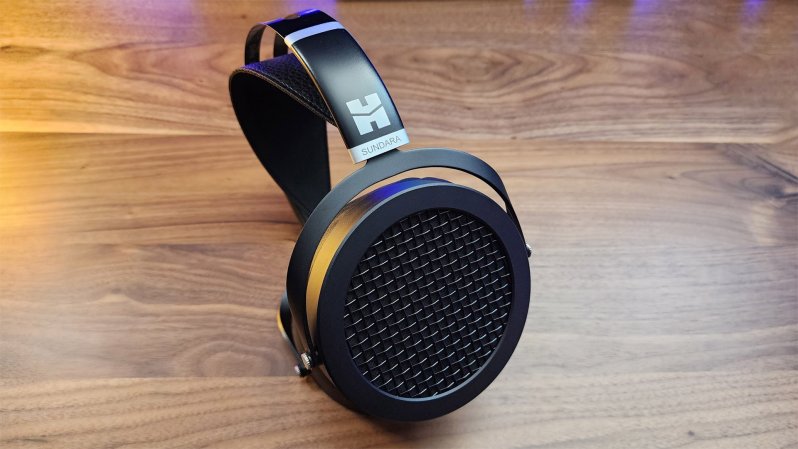
Pros
- Affordably priced
- Wide soundstage
- Exceptionally detailed
- Thin, low-profile design
Cons
- Bass can seem recessed
- Not great for portable use
Why it made the cut: The HIFIMAN Sundara are detail powerhouses for their price and a gateway drug to the wider world of planar magnetics.
Specs
- Price: $299
- Type: Open-back
- Frequency Response: Not disclosed
- Impedance: 37 ohms
- Sensitivity: 94db
- Weight: 372 grams
To start off, budget is relative. To some (like our managing editor), the $1,299 HIFIMAN Arya Stealth Magnets Edition is an amazing “budget” pick because of its extraordinary bang for the buck when putting many options in the $2,000-$3,000 range to shame. But here we’ll talk true budget, which in the planar magnetics world is under $500. So we’re talking about the Sundara, which has become one of the staple recommendations for new hi-fi(man) fans, and it’s not hard to see why. These headphones deliver a spacious soundstage and an incredible amount of detail for their comparatively modest price. In fact, it’s hard to find a better value in this space, which is exactly why terms like “giant killer” pop up so frequently in conversations surrounding it: these headphones deliver performance well beyond the $349 price point.
With that in mind, it’s important to note that balance is the name of the game with these headphones. Even though it offers good bass and treble extension, this isn’t what most people would consider a bass-heavy headset. Likewise, even though it offers a slim profile when worn, the cups don’t swivel to lie flat on your chest and there’s no travel case, so they’re still a better fit for listening at home than on the go.
Looking for something a little more portable but still great? The Audeze LCD-1, if you can snag one (it’s now discontinued), is an outstanding choice that solves the Sundara’s portability issues, is smaller, more stylish, allows you to rotate the earcups, and includes a travel case. Those benefits come at a higher cost of $399.99, less detail, and a more plasticky build, but it’s hard to argue with its still-great sound.
Related, in a way, is the similarly priced Edifier STAX SPIRIT S5, which is quite a mishmash of branding and components, so let’s decipher. Edifier, a Chinese company with a firm foothold in the affordable speakers sector on Amazon (and beyond), bought the legendary STAX brand of electrostatic headphones in 2011. In 2016, Edifier invested in a minority share of Audeze. So, the STAX SPIRIT S5 is a wireless (but not noise-cancelling) closed-back headphone that, despite its name, has nothing to do with electrostatics (that’s a whole ‘nother tech for another time) but does feature Audeze’s Fluxor magnetic structure, Uniforce diaphragm, and Fazor phase management—and more than a passing resemblance to the LCD-1. Sonically, though, they’re a bit more reminiscent of the 7Hz Timeless in headphones form, offering a quick-moving body with plenty of detail balancing out bold but not boomy low end. It’s a clearly closed-back soundstage, so flat in comparison to its less-isolating brethren. Still, if you’ve got an Android phone that supports the LDAC, aptX Adaptive, and aptX Lossless (Snapdragon Sound) codecs and are looking for some Bluetooth 5.4 headphones that travel well, the Edifier STAX SPIRIT S5 could be a flavor to savor.
Best for mixing: Audeze MM-500
Pros
- Balanced, midrange-focused tuning that doesn’t color the mix
- Comfortable to wear over extended listening sessions
- Detail-rich with clear layering
Cons
- Soundstage isn’t very big
- Limited availability
Why it made the cut: The Audeze MM-500 is custom-tuned by a renowned audio engineer, and it shows. These headphones are comfy, balanced, and revealing.
Specs
- Price: $1,699
- Type: Open-back
- Frequency response: 5Hz – 50kHz
- Impedance: 18 ohms
- Sensitivity: 100dB
The Audeze MM-500 sounds unlike any other pair of Audeze headphones we’ve heard, but there’s a good reason for that. Crafted with the help of Grammy-winning audio engineer Manny Marroquin (and emblazoned with his initials beneath the headband), they’re designed to be used in the studio, replacing the classic studio monitors that are a staple of audio mixing. Their tuning is anchored by an exceptionally clear upper midrange, as that’s the frequency range where the hardest work to avoid mix congestion must be done, but this emphasis doesn’t mean you can’t enjoy an uncolored listening experience. And this actually makes the headphones perfectly suited for music with rich vocals and energetic instrumentation—able to handle tactile tones and busy articulation while maintaining a naturalistic presentation that never masks the rest of the spectrum. It’s the ultra-thin, ultra-responsive drivers that set them apart from other mixing headphones, enhancing the monitoring experience with the detail, speed, and resolution that only planar magnetic drivers can provide.
These headphones are revealing. Though the soundstage isn’t very big, they offer a very detailed listening experience with outstanding layering between tracks. Everything is well-defined, crisp without being sharp. As you lay down takes, you’ll be able to hear exactly how they fit together without any of the messiness or veiling of lesser headphones. These same qualities mean that some listeners might find them less exciting for normal listening, as there’s no elevated low-end. But for audio engineers, their uncolored timbre and ability to deconstruct the mix are their secret weapons.
The other high point they bring to the table is their exceptional comfort. While sitting slightly tighter around the ears than several of Audeze’s other headphones (like the popular LCD-2 Classic), their headband distributes their 1.09-pound weight well so that, despite the rock-solid aluminum and steel build, they can be worn for hours without soreness (as one might do in a mix session). They’re a well-rounded pair of headphones custom-tailored for industry professionals but with plenty connoisseurs can appreciate.
Interested in a taste of the tone? The Audeze MM-100, an introductory headphone in the studio line shown below, is only $399.

Best closed-back: Meze Audio LIRIC
Pros
- Great isolation (for you and others!)
- Stylish but minimal: won’t attract unwanted attention
- Comparatively low-weight
- Surprisingly wide soundstage
Cons
- Pricey
- No wireless option
- Still a bit bulky
Why it made the cut: The Meze LIRIC is a stylish closed-back in a world of open-back headphones and a great choice for isolation that doesn’t sacrifice an impressive soundstage.
Specs
- Price: $2,000
- Type: Closed-back
- Frequency Response: 4Hz – 92kHz
- Impedance: 61 ohms
- Sensitivity: 130dB
- Weight: 427 grams
Closed-back planar dynamic headphones are few and far between, but the second-generation Meze Audio LIRIC is the best among the more (relatively) approachable top-tier models. This headphone is packed with technology to make it the premiere closed-back headphone for audiophiles. The LIRIC uses a custom-made MZ24 driver, a scaled-down adaptation of the Rinaro voice coil included in the Romanian company’s co-flagship Empyrean II headphone (which retails for $2,999), tuned to operate in a closed-back shell. Best of all, Meze has been able to overcome the biggest challenge facing closed-back headphones—reduced soundstage—with its all-new Phase X system. This may just be the most spacious closed-back option (of any driver style) available today.
Mounted in a vented, purpose-built acoustic chamber, the LIRIC’s driver manifests a captivatingly deep staging without losing its imaging authority. Despite being a closed headphone, the bass is not overwhelmingly energetic, though the LIRIC can take well to goosing the lows. Mid-range gives vocals plenty of fleshy presence, while treble is fresh but not fiery—all thanks to a new QWRM (Quarter Wavelength Resonator Mask). Pair the LIRIC with a source known for its top-end extension; you’ll experience more energy. Pair the LIRIC with a rounder source; you’ll up the musicality. What the LIRIC is, ultimately, is extremely friendly to equipment and EQ choices.
Meze describes the LIRIC as a “portable planar,” meant to be taken on the go. At 427 grams, it’s lighter than many competitors at this price point but still made of durable magnesium and aluminum to withstand the rigors of daily life. The Macassar ebony wood, copper-accented earcups (even more unique than the original edition’s black matte leather surface) are exceedingly stylish, if a bit bulky, and rotate to lay flat on your chest when you need a break, though the plush oval pads and wide headband promote long-term comfort. The biggest downside is that there’s no way to listen to the LIRIC wirelessly, so “portable,” in this case, still factors in toting around a cable. But the most unadulterated listening experiences are still found across a wire, and the LIRIC is efficient enough to play nicely with almost any source, so this isn’t that big of a deal for most listeners—as long as you have a device with a headphone jack or an adapter.
Best earphones: 7Hz Timeless AE
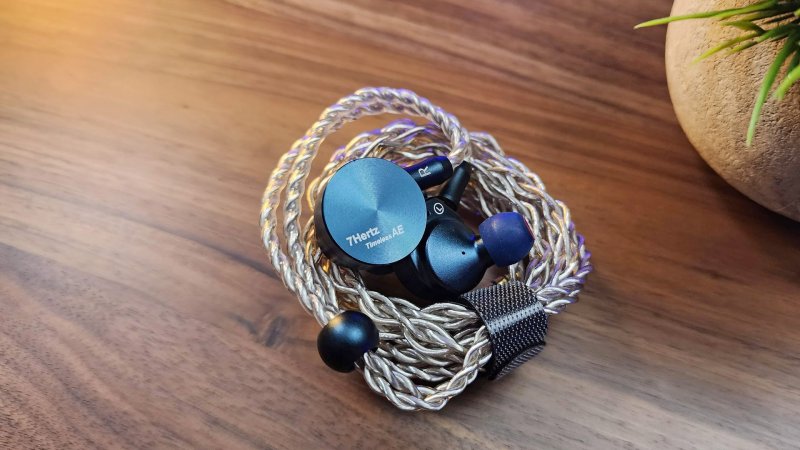
Pros
- Very well-tuned, balanced sound
- Full of detail
- Good bass performance
Cons
- Unusual shape
- Limited soundstage
Why it made the cut: The 7Hz Timeless AE offers well-tuned planar sound at an affordable price.
Specs
- Price: $259
- Type: Closed-back earphones
- Frequency Response: 5Hz – 40kHz
- Impedance: 14.8 ohm
- Sensitivity: 104dB
- Weight: 5.5 grams (each earpiece)
Planar earphones are nothing new, but few in-ear-monitors have been quite as well received as the 7Hz Timeless at its $219 price point, and the company recently released an updated version that’s even better than the first: the 7Hz Timeless AE. The magic of the Timeless lies in the tuning of its 14.2mm drivers (powered by double-sided N52 magnet arrays), updated to provide deeper, more impactful bass and smoother treble for hours of easy listening. The Timeless AE delivers a warmer sound that doesn’t skimp on the bass. At the same time, it delivers an enjoyable amount of detail, which combines to make these earphones a well-balanced buy at $249.
The Timeless isn’t perfect, however. Since it uses an in-ear design, the soundstage is narrower than any over-ear headphones included on this list. It also breaks the mold with the divisive, quarter-like shape of its earpieces. You’ll either be ambivalent about the shape or outright hate the shells—there doesn’t seem to be much in between. If you already own the original Timeless, the AE version probably isn’t worth the price to upgrade if you’re comfortable playing with EQ.
One of the biggest reasons to choose the 7Hz Timeless AE is its impeccable balance of price and performance, but there are other options if you’re looking to spend less or more. For example, the $159 Hidizs MP145 has 14.5mm drivers that deliver an enriched midrange particularly well-suited for live, vocal-anchored music. And for a truly audiophile experience, the Campfire Audio Supermoon is an in-ear monitor featuring 14mm, 2-micron-thick planar drivers in solid-body enclosures that nestle in your ear canals. It has a more refined aesthetic and delivers incredible sound quality, but at the high price of $1,199. While not a small earbud (it can’t be in order to fit its 14mm, 2-micron-thick planar drivers, the Supermoon is comfortable. And that comfort extends to the frequency response, which is smooth and cohesive throughout. The bass is textured but controlled, mid-range is dynamic, and treble is honest (which can be a good or bad thing, depending on the recording). Details are effortlessly retrieved and rendered across an uncluttered soundstage—one that’s astounding for a closed, compact earpiece. Planar IEMs are really coming into their own.
Best for gaming: Moondrop Venus
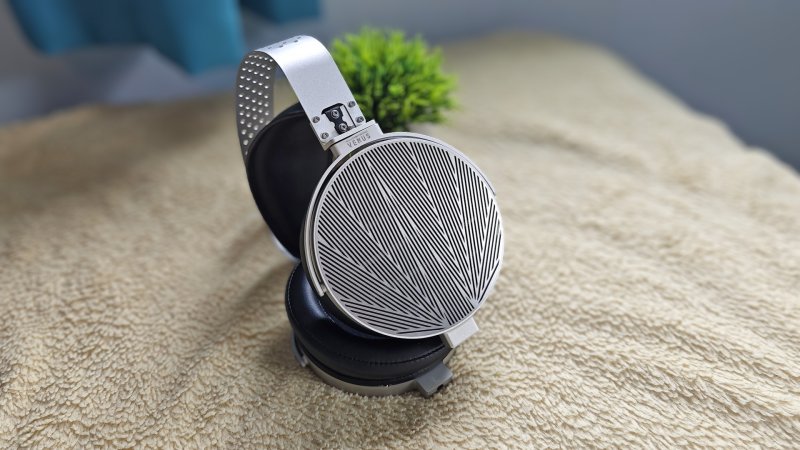
Pros
- Spatial cues are immaculate
- Distinctive look
- Responds well to EQ
Cons
- Somewhat bass-light out of the box
- Has to be used in a quiet location for optimal performance
Why it made the cut: The Venus is only the second pair of headphones by Moondrop Labs, but you wouldn’t guess it based on its construction and sound quality—both of which convey a clear vision of clarity.
Specs
- Price: $599.99
- Type: Open-back headphones
- Frequency Response: 6Hz – 80kHz
- Impedance: 18 ohms
- Sensitivity: 100dB
- Weight: 600 grams
We’re going out on a limb … a raid? a quest? … for this pick because it’s far from a standard “gaming headphone.” There’s no head-tracking or adjustable boom mic, etc. (but you have a signature mic for livestreaming already, we’re sure). However, the same things that make the Moondrop Labs Venus an attractive headphone for audiophiles—including a sparkly but still non-fatiguing treble that lets each note ring out—are also great for the situational awareness needed to win.
The Venus is the sophomore over-ear headphone of Moondrop Labs, a boutique audio company founded in 2015 in Chengdu, China, and colloquially known as “Moondrop,” which first became a darling of the IEM scene. It’s got a bold design and tuning designed to shear the veil between you and your music, or your adventure. Each earcup is finished with a milled faceplate that would be right at home in BioShock—if Andrew Ryan cared a little more about sound quality, that is. (And they’ll look great on a live stream.) The headphones have heft, but once in place, they’re stable: not too tight, not too loose.
Most importantly for missions, imaging and soundstage are excellent. Aided by a specialized waveguide that smooths any errant peaks, the Venus places each audio cue on its own layer. It’s resolving and spacious enough to make every sound source perfectly audible, even in busy tracks or cacophonous multiplayer matches. There’s no masking or loss of detail from overwhelmed drivers, but also not so immersive that it’s diffuse (an experience we describe in more detail in our full review).
Being open-backed, the Venus lets in and leaks sound, so it won’t work if you’re gaming on the go. It’s also at its best when amped. And it isn’t going to hit as hard as some other closed-back planar gaming headsets (might we suggest the Audeze Penrose or Maxwell, depending on your platform). But suppose you want to get lost in a soundtrack in or out of the game. In that case, the planar drivers have no trouble reaching low and maintaining speed, delivering rich sub-bass with engaging texturing even if it doesn’t delve to the deepest reaches of frequency response. Clarity is Venus’s hallmark, but it takes well to EQ if you think it’s slightly anemic. Honestly, it’s a strong contender for the best budget planar for pure audio lovers—as its fit, finish, and presentation are outstanding for the price—it’s just slightly more expensive than our next pick.
Best for classical and live music: HIFIMAN Audivina
Pros
- Deep soundstage
- Gorgeously designed and comfortable to wear
- Richly layered and detailed
Cons
- Exceptionally large
- Sound is slightly colored
Why it made the cut: The HIFIMAN Audivina offers a balanced yet wholly engaging listening experience with one of the best soundstages available in a closed-back planar.
Specs
- Price: $1,999
- Type: Closed-back
- Frequency response: 5Hz – 55kHz
- Impedance: 20 ohms
- Sensitivity: 97dB
Closed-back headphones usually trade soundstage for isolation, but that’s not the case with the HiFiMAN Audivina. These headphones deliver far less isolation than the average closed-back but trade that for a surprisingly deep listening experience that almost seems to draw instruments apart, allowing you to hear the rich detail within. The sound is natural, though isn’t exactly flat, thanks to a slight bump in the bass and some small peaks in the mids and highs to push out details. There’s a small amount of coloration, but nothing exaggerated, and it makes for a thoroughly engaging listen. The depth of its listening experience draws you in and delivers a sense of realism perfect for live recordings, the richly detailed, open soundscape of classical music, as well as films and cinematic scores.
The naturalness of its listening experience is a perfect match for the design of the headphones themselves. Its large, oval-shaped cups are carved from real hardwood and have a beautiful, orange wood grain finish and equally earthy tan ear cushions. Because of the multi-stage acoustic architecture housed within, resonance chambers inspired by renowned concert halls, the headphones are big—so much so that smaller listeners may find that they sit too loosely without being very particular about their positioning. They also have heft, weighing in at roughly one pound, though you wouldn’t know it based on how comfortable they are to wear. Meant to replicate (replace?) the spacious presentation of a pair of nearfield monitors, HIFIMAN has done a great job with these headphones, making them the kind of cans you can lose hours to in a cascade of different movements. (Want a more traditionally intimate closed-back planar? Check out the Meze Audio LIRIC above or Dan Clark below.)
Also worth considering for the audiophile: Dan Clark Audio Stealth
Pros
- Huge V-Planar drivers
- Stylish design
- Outstanding bass and rich detail
- Intricate tuning system
Cons
- Big and bulky
- Extremely expensive
Why it made the cut: The Stealth from Dan Clark Audio is super stylish and packed with technology to enhance the listening experience.
Specs
- Price: $3,999
- Type: Closed-back
- Frequency Response: Not disclosed
- Impedance: 23 ohms
- Sensitivity: 86-87dB
- Weight: 415 grams
If you’re looking for a top-of-the-line headphone custom-designed for audiophiles by audiophiles, look no further than the Dan Clark Audio Stealth. It’s a set that includes all of the latest innovations from one of the most respected names in the boutique audio business. Its closed-back design—not the typical form factor for flagships—also breaks the mold, making it a better fit for those times when you want to block the world out and disappear into your music.
This stealth bomber-like headphone uses the fourth generation of the company’s esteemed V-planar drivers, which are 20% larger than the last generation and deliver incredibly low distortion and outstanding detail. Enhancing these drivers further is DCA’s Acoustic Metamaterial Tuning System, which not only reduces phase distortion for increased clarity but enhances treble performance without adding harshness or sibilance.
When it comes to tuning, the Stealth plays it safe with a sound that’s close to the classic Harman Curve. That means you can count on rich, detailed bass that doesn’t overwhelm the other frequencies and plentiful details. The Stealth also manages to buck the stigma of closed-backs sounding compressed with a wide, airy soundstage.
The biggest drawback to this headphone really is its price. At $3,999, it will be hard for many listeners to justify. Those that do will be in for a treat, however. Dan Clark Audio rarely fails to impress.
Things to consider before buying the best planar magnetic headphones
Buying any pair of headphones can be a confusing mix of terminology and marketing buzzwords. This is especially true with planar magnetics, where the costs are often significantly higher. To help you cut through the noise, these are the most important things you should consider when shopping for the best planar magnetic headphones:
Price
Let’s get this out of the way first: planar magnetic headphones can be expensive. This is true of other types of headphones as well, but it’s especially common to see planar magnetics come at a premium compared to their dynamic driver counterparts. This is due to the complexity of the driver itself, as well as the pedigree of the brand producing them. As with all things personal audio, a high price doesn’t necessarily mean you’re going to enjoy the sound more, so take the time to read reviews to get an impression of its real-world performance. If you’re considering a very expensive set, pay careful attention to the return guidelines to be sure you can refund or exchange it if it’s not your cup of tea.
How difficult they are to drive
Open up a headphone that uses dynamic drivers, and what you’ll find is familiar to anyone that has ever seen a speaker: a cone or dome, behind which a magnet pulls a coil that vibrates the diaphragm to create sound waves. At the heart of planar magnetic headphones, however, are incredibly thin membranes imprinted with conductors and strung across magnetic arrays that manipulate them at incredible speed with low distortion.
Because most planars are physically larger than dynamic drivers (sometimes twice as large at 100mm versus 50mm, for instance), they often require more voltage to drive. It’s important to consider whether you’ll need an external amplifier to power them properly. This isn’t always the case. Efficient planars like the HIFIMAN Deva can be run straight from most PCs, smartphones, etc. without issue. It isn’t common, however, and manufacturers often design their headphones around the idea that listeners will have a separate amp in their setup.
The amount of power a headphone requires will vary from set to set. This is determined by two key specifications: impedance and sensitivity. The higher the impedance (measured in ohms), the more difficult the headphones are to drive. The inverse is true of sensitivity (how loud the headphone will get with a certain amount of power): the higher the sensitivity, the easier it will be to drive. The simplest course to determining the power needs of a headphone is to plug these values into a headphone power calculator. This will tell you how much power it takes to drive those headphones to different volume levels.
Open- or closed-back
Like all headphones, planar magnetics come in open-back or closed-back varieties. These terms refer to the outward-facing side of the earcups and whether it’s sealed off to trap sound or uses a grille to let sound pass out the back (while protecting the delicate diaphragm inside). Each design has its benefits and drawbacks and there is no right answer for which is better. Instead, it’s best to understand what each term means and to determine what’s best for you.
Whether it’s the more affordable HIFIMAN Ananda or the ultra-premium line-up of ABYSS Headphones, open-back is by far the most popular design in planar magnetic headphones. It complements the strengths of the driver—detail, clarity, realism—by adding a natural sense of airiness and space to the music. This is referred to as soundstage. Open-backs don’t isolate sound well, which is their biggest drawback. Anyone sitting close to you will be able to hear your music and you’ll be able to hear the noise of your surroundings.
Closed-back headphones are much more common when looking at big-box consumer stores for connected convenience features like noise cancellation, whether in budget models or more high-end ones like the Bowers & Wilkins Px8, Focal Bathys, or the Apple AirPods Max. These headphones usually offer a reduced soundstage but at the benefit of vastly improved isolation. If you plan on wearing your headphones to commute, or simply want more privacy to your listening, closed-backs are the superior choice.
Tuning
One of the most important considerations is also the most nebulous: how it actually sounds. Brands often refer to how clear and detailed their sound is, and make heavy use of buzzwords in their marketing. But what does that actually mean for how it compares to other headphones you’ve heard in the past?
That’s where graphs come in. It can be difficult to test a headphone before buying it, so many manufacturers and audio enthusiasts provide frequency response graphs to give a better impression of how a headphone actually sounds. These graphs are essentially a swooping line that represents how the sound is balanced between the lows, mids, and highs. Take a moment to read up on how to read a graph and, wherever possible, take a peek at how the sound is balanced before hitting Buy Now.
Weight and size
While it’s not a rule, many planar magnetic headphones tend to be larger and heavier than their dynamic counterparts. This is because the driver itself tends to be larger and utilizes magnets on one or both sides of the driver to deliver sound. Both of these require a bigger earcup. Boutique audio brands also like to design their earcups around improved sound quality and unique aesthetics (even sometimes exotic woods and composites), which can mean anything from the egg-shaped windowshades of the HIFIMAN Arya Stealth Magnets Edition to the stylish rings of the Audeze LCD-4z. This doesn’t have to be the case, however, as the traditional design of the discontinued but still desirable Oppo PM-3 clearly illustrates.
Regardless, be sure to consider where you’ll be using your headphones and your own comfort needs while you’re doing so. A heavier headphone can lead to sore spots on the top of your head. Likewise, a giant pair of cans can attract sideways glances you may not be ready for.
FAQs
They absolutely can be, but, like with most things with personal audio, it will be a matter of preference. Planar magnetic headphones can offer incredible detail and powerful presence without tipping into distortion, but the very best tend to be expensive and require more power to drive. Additionally, they often use open-back designs which bleed sound and let in surrounding noise. But there’s a reason many of the most popular audiophile headphones use planar magnetic drivers: they can sound incredible.
Whether it’s worth it depends on how much you like the “planar sound” and whether it fits your budget. If it’s your first time, pay careful attention to the sensitivity and impedance and consider using a headphone power calculator to see if you’ll need a separate DAC/amp to drive your listening experience (our associate managing editor is particularly fond of the iFi xDSD Gryphon or Questyle M15 for a portable and the HIFIMAN EF400 for a desktop—all overperformers). As always, we recommend purchasing from retailers with generous return and exchange programs so you can audition your new headphones before committing to what could be a very expensive purchase.
Not necessarily. Planar magnetic headphones have an excellent reputation in the audiophile community because some of the most popular models feature those drivers. They tend to offer exceptional detail for the price and, when tuned correctly, can deliver powerful bass and excellent soundstage. But, the same can be said of dynamic drivers. It really comes down to the individual headphone you’re considering.
Before pulling the trigger, be sure to read professional reviews from reputable sites like Popular Science, Headphonia, and Headphonesty. Also, take into account the impressions of real users on forums like Head-Fi and the r/headphones subreddit. While dynamic drivers are often cheaper (not always, see the Focal Utopia), many amazing pairs of headphones use them, so there are multiple ways to get the sonic signature you crave.
Do they ever—or, perhaps, can they ever. Due to the large size of planar magnetic drivers, they can be tuned to deliver powerful and outstanding bass performance. Because planar magnetics are so adept at delivering a nuanced listening experience, bass notes are often full-bodied and thick. Instead of being a simple low note or rumble, great planar magnetics allow you to hear rich, lifelike texture. It’s akin to going from an SD screen straight to 4K HDR.
This kind of performance is not a given at lower price points, however. In fact, many affordable over-ear planar magnetics tend to lean away from bass and instead emphasize increased detail in the mids and highs. Many prospective planar fines hear wonders about the bass performance of planar magnetic headphones and then wonder why they don’t hear it among their first affordable sets. That isn’t to say you have to spend that much to have a bass-rich planar listening experience, but it’s important to research any headphones you’re considering buying to see just what area it excels in or if it’s a good all-arounder.
Final thoughts on the best planar magnetic headphones
- Best overall: Audeze LCD-2 Classic
- Best splurge: Audeze LCD-5
- Best budget: HIFIMAN Sundara
- Best for mixing: Audeze MM-500
- Best closed-back: Meze Audio LIRIC
- Best earphones: 7Hz Timeless
- Best for gaming: Moondrop Venus
- Best for classical and live music: HIFIMAN Audivina
- True audiophile over-ears: Dan Clark Audio Stealth
Upgrading to the best planar magnetic headphones can transform your listening experience. Take the time to find the right set for you, whether that’s a big and bold pair of over-ear headphones or a small-but-mighty pair of in-ears, and you’ll be able to experience your favorite songs like never before. They don’t always come cheap, but a great headphone investment can pay dividends in your enjoyment for years to come.
